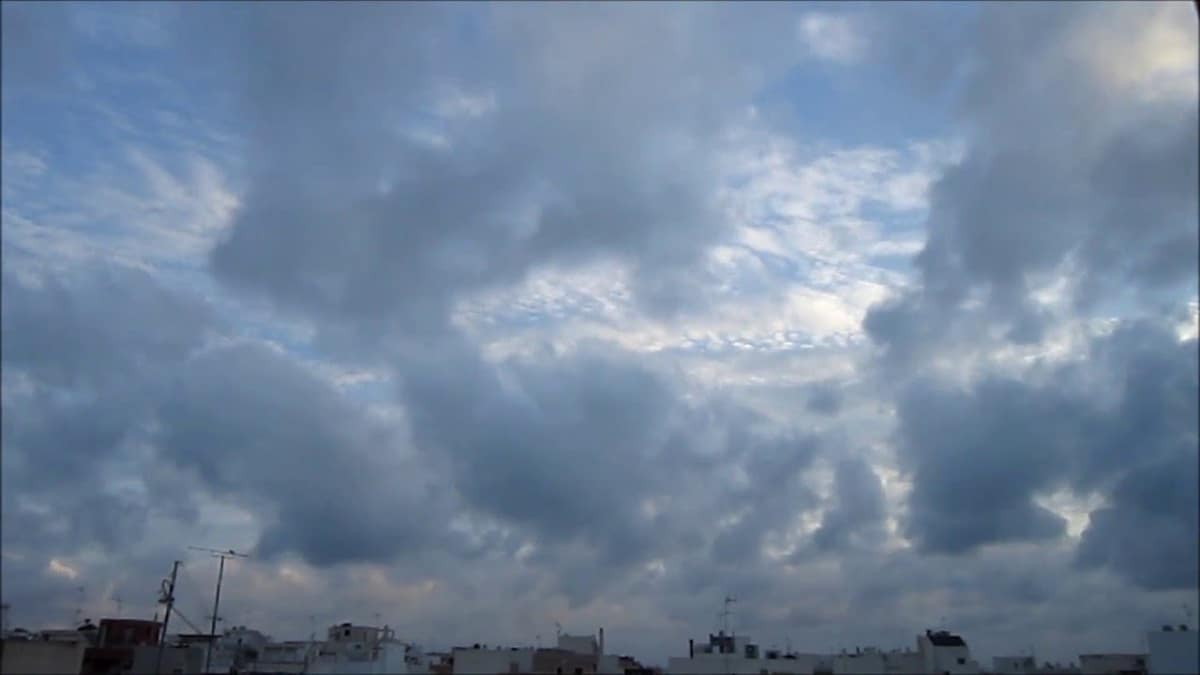
We know that air masses are huge atmospheric bodies within which there are different humidity and temperature conditions that characterize the type of air mass we are dealing with. These air masses adopt the characteristics of the area in which they are formed and depend on the movement they generate when they are created. According to the stability of the air masses we can find different types of fronts. Today we are going to talk about warm forehead and their characteristics.
If you want to know more about the origin and consequences of a warm front, this is your post.
Air masses and atmospheric stability

To understand what a warm front is, we must know the atmospheric dynamics in relation to the functioning of the air masses. The stability of all air masses is what determines the weather that occurs in a certain area. When we have a stable air we speak of an area where movements are not allowed vertically. For this reason, the formation of precipitation clouds cannot occur. When there is atmospheric stability, it is very appropriate to speak of anticyclones. While stable air favors good weather.
On the other hand, when there is unstable air, we see that vertical movements are favored and rain clouds are produced with rough weather. These situations are associated with depressions since there is a drop in atmospheric pressure and the creation of a storm.
If an air mass circulates over a surface that is cooler, it is considered a warm air mass. Movement across the surface that has a lower temperature will begin to cool down the part closest to the ground. In this way, as the air on the surface begins to cool becomes denser and heavier. With this type of characteristics, vertical air movements are prevented, thus creating a stable air mass. This stability stands out for having weak winds, a vertical temperature inversion, which causes an increase in dust from the pollutants that exist in the lower layers. This stability is a problem for the most polluted cities. We also see some difficulties for full visibility and few clouds with vertical development.
On the other hand, if the air mass circulates over a surface that is warmer than it is called a cold air mass. As it circulates on the surface, the opposite effect to the one we have described will occur. It will begin to heat up at its base and they become less dense, which will favor vertical movements. This turns into an unstable air mass which causes an increase in the intensity of the wind, an improvement in visibility, but a development of clouds and precipitation.
Warm front

As we have already seen, the air mass is characterized by having similar conditions of temperature and humidity throughout it. That is why we must separate the air masses by a surface of discontinuity. Depending on the characteristics they have at the boundary of an air mass, we can see the formation of a warm front, a cold front, an occluded front, or a stationary front.
The front and warm are formed when a mass of warm air reaches another of colder air. The hot air tends to rise above the air mass with the lowest temperature. This lower temperature air mass is known as the cold sector. When air masses collide, condensation and subsequent cloud formation are caused. The main feature of the front and warm is that it has a small slope. That is to say, usually travels at an average speed of about 30 km / h and has a cloud cover height of approximately 7 kilometers. This means that the predominant clouds are low and medium clouds.
Clouds and precipitation develop along the contact surface between the two air masses. Between the appearance of the first clouds and the beginning of the precipitations can happen between 24-48 hours.
Warm front weather

Let's analyze what the weather brings us a warm front. The atmospheric situation that causes the front and warm begins with the appearance of high clouds. These high clouds are known by the name of cirrus clouds. They tend to be on or near the mind 1000 kilometers or more ahead of the front. Pressure drop usually starts due to rising warm air and cold air withdrawal.
Progressively, we see how the sky becomes cloudy as it approaches the most important part of the unstable line. Cirrus clouds become in cirrostratus that thicken more and more to form altostratus. Depending on the instability of the front, it may contribute some drizzle during the formation of these clouds. We see that the pressure values continue to drop and the wind speed increases. We know that the wind goes in the direction of those areas where there is less pressure. Therefore, if there is a drop in pressure on the surface as the hot air rises, the wind will go in that direction.
Finally, the nimbostratus appear. These types of clouds are located on the same front and are the protagonists of the most important precipitations. The wind reaches its maximum intensity and the pressure is still decreasing. Lower clouds also tend to arrive, such as strata that are formed by increased humidity due to the rainfall that is generated. Some of these clouds alone that are responsible for hiding other higher clouds and generate a frontal fog. Sometimes, This fog can give visibility problems to the horizon.
The fronts advance very weak and usually produce weak and moderate rainfall. The characteristic that predominates in the front and warm is that, although they are moderate and weak rains, they act on a large area of land and for a long period of time. These are usually the cold moments in late fall or early spring or during winter. At this time the precipitation can take the form of snow and is transformed into sleet and ends in rain.
I hope that with this information you can learn more about the warm front and its characteristics.